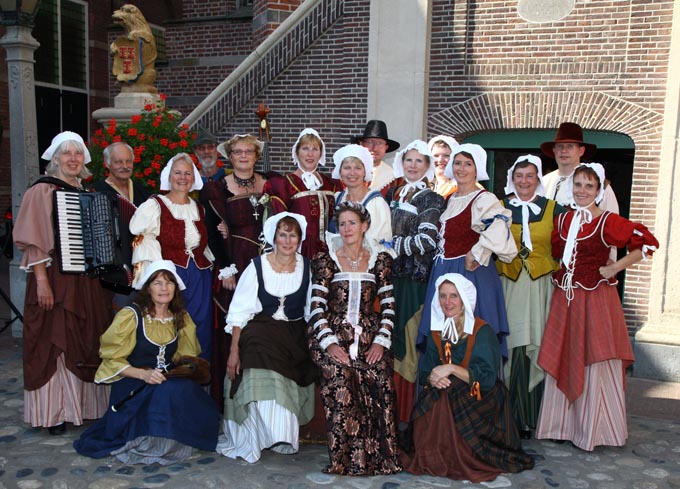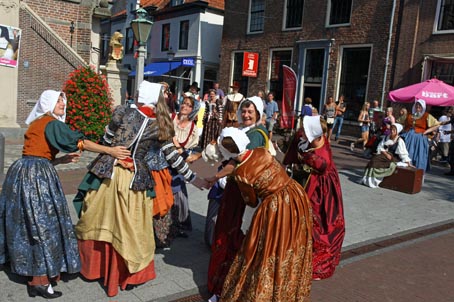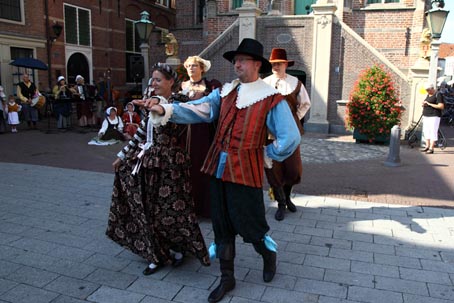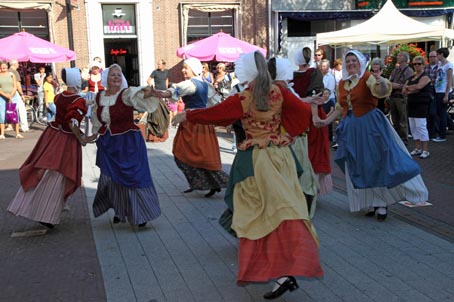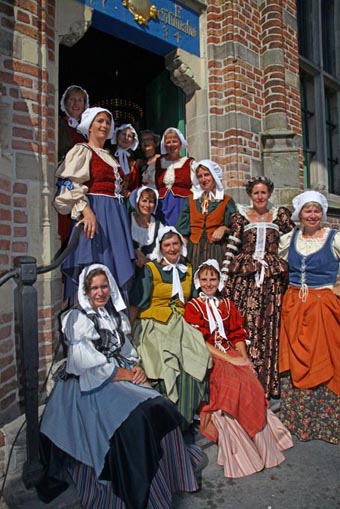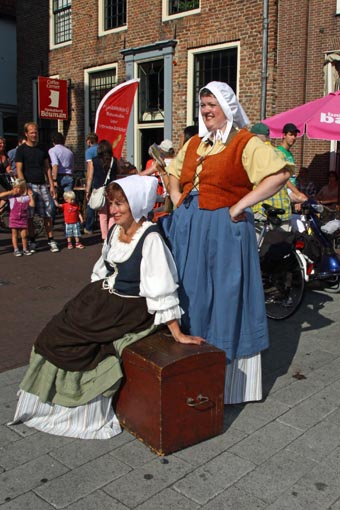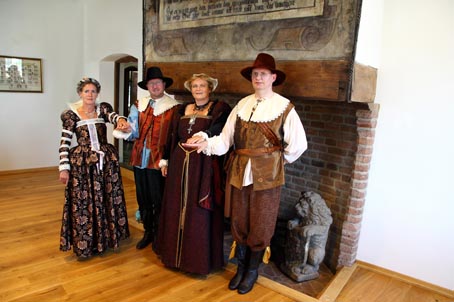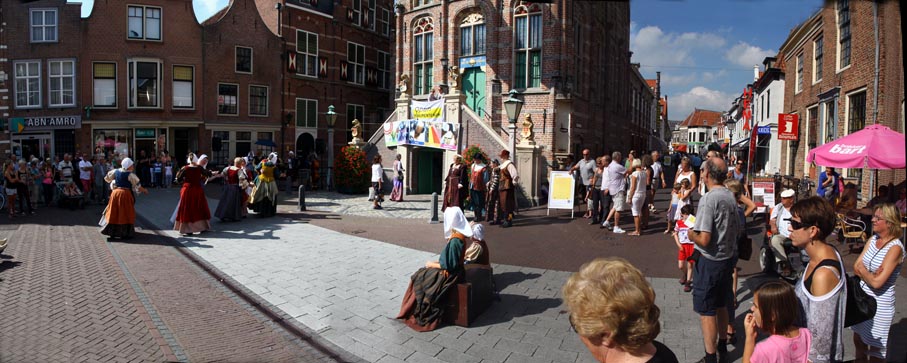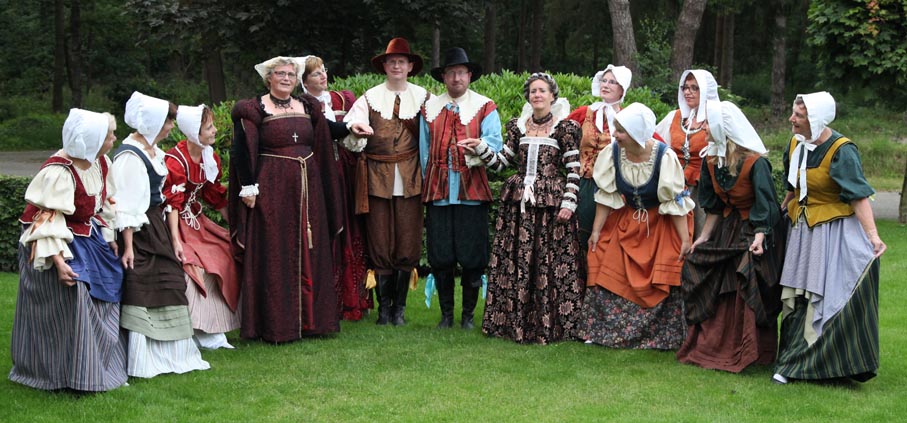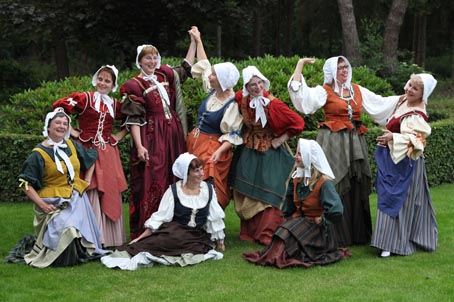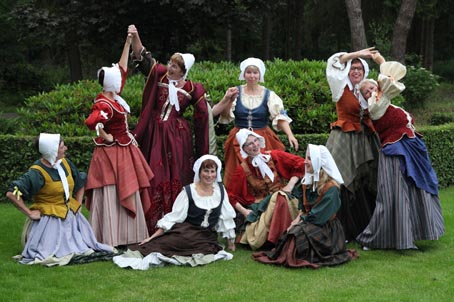|
Het Hof van Graaf Maurits
Deze dans neemt u mee terug in de tijd naar de 17e en 18e eeuw in Europa:
- naar de hoogste rangen in sociale kringen, waar de edelen en aristocraten met hun dames, gekleed in de mooiste baljurken, ingetogen dansten op de diverse hofbals;
- naar de lagere klasse, meestal de bedienden van de aristocraten, die veelal de draak staken met de strenge regels en vele voorschriften bij deze hofbals en die hun eigen dansen ontwikkelden. Deze dansen werden natuurlijk niet aan het hof gedanst.
In deze dans ziet u een combinatie van een stukje hofbal met een vrolijke dans van het gewone volk en ter afsluiting een Menuet.
Een klein stukje geschiedenis
Tijdens de tweede helft van de 17e eeuw werd dansen zeer belangrijk, zowel op sociaal als politiek vlak. Het Franse Hof onder Lodewijk XIV werd het toonbeeld van elegantie en voornaam gedrag, meteen nagevolgd door alle Europese Hoven.
Hofbals werden bijna dagelijks gehouden en duurden veelal tot zonsopgang.
Zowel de aantallen voorname bezoekers als de luxe van hun kostuums en baljurken was van zeer groot belang. Dit bepaalde de macht van de koning, graaf of hertog in zijn land of regio in Europa, zowel sociaal als politiek.
Vaste procedures bij de hofbals gaven duidelijk de sociale rangen binnen het hof aan.
Een officieel bal werd altijd geopend met een Branle, waarbij paren aansloten in de rij volgens de vaste sociale rangorde. Daarbij werd de dansorde voor die avond bepaald.
Vervolgens kwamen de belangrijkste dansen “dances a deux” aan bod, uitgevoerd door één paar tegelijk, te beginnen met de hoogste in sociale rang.
Eén van de meest populaire dansen in die tijd was het Menuet.
Het Menuet is waarschijnlijk ontstaan vanuit een volksdans uit West-Frankrijk bekend als de Branle de Poitou en geïntroduceerd aan het Hof in 1653.
Hoewel de bewegingen van de dans potentieel heel energiek en levendig zijn, werd de dans altijd heel precies uitgevoerd met veel controle en ingetogenheid, conform de gedragsregels en etiquette.
Door de vele regels, gebruiken en voorgeschreven passen werd de dans in de loop der tijd steeds langzamer en statiger gedanst.
|
|
Count Maurits’ Court
This dance carries you back to 17th and 18th century Europe:
- to the upper class of European society, where noblemen with their ladies, dressed in flamboyant costumes, danced genteelly around at the various court balls;
-to the lower classes of society, often the aristocrats’ servants, who made fun of the strict rules at these upper-class court balls and developed their own dances. These dances were obviously not performed at the official balls.
In this dance you will see part of an official ball dance combined with a lively and gay lower-class dance, rounding off with a stately Menuet.
A little history
During the last half of the 17th century, the act of dancing reached unprecedented importance, both socially and politically. The French Court, under Louis XIV, became the paradigm of elegance and civil behavior, emulated by the other Courts of Europe.
Court balls were held every night, often lasting until dawn.
The number of aristocrats attending as well as the glamour of their costumes and dresses were of the utmost importance. This determined the power of the King, Duke or Count in his country or region in Europe, both in politics and in society.
Established procedures for balls clearly reflected the social ranking within the Court.
A formal ball would open with a Branle, where couples joined the line following an exact social hierarchy that would establish the dancing order for the evening.
The most important dances of the ball were next: the many “danses à deux “, performed by one couple at a time, beginning with those of the highest social rank.
One of the most popular dances during this period was the Menuet.
The Menuet was probably derived from a folk dance of Western France known as the Branle de Poitou, and was introduced at the French Court in 1653.
Though the movement of the dance has great potential for energy and vivacity, it was performed with control and precision, in keeping with good manners.
Full of ceremonies, customs, and a defined set of steps, the dance became more slow and stately over the years.
|
